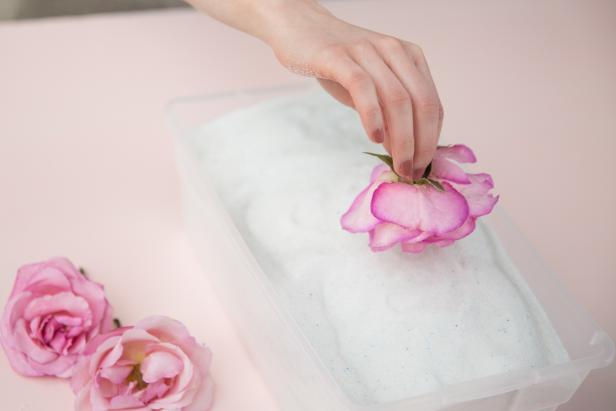We hear from brides all the time, after their big day is over they hate to see their beautiful bouquet just tossed in the trash. How can you capture time in a bottle? Bouquet preservation is a way to keep some of your flowers, and all of the memories.
If you're planning a wedding, devoting some time to think through what you'll do with your blooms the day after will give you the most options. To start, we're going to break down 4 ways flowers can be dried and preserved into something completely new for you to love in your home. The best part is, each of the options has limitless possibilities to express your creativity and style. Once you've settled on a plan, coordinate with your florist or gather your supplies and DIY.
Pressed
Pressed flowers is a super ancient tradition dating back to the ancient Egyptians. The Japanese called their pressed flower art, 'Oshibana' and it's popularity travelled to the Western world during the Victorian era. Pressing flowers preserves their color and shape and allows you to display them easily behind glass in a frame. The process of pressing is easy to do and requires nothing more than some heavy books or objects which is why DIYers love it! If you're in a hurry, there is also a microwave method (check out this YouTube)
Use your freshly pressed blooms to create wall art, ornaments, or print them into thank you cards.
Silica Dried
Silica gel crystals are a desiccant which means they draw moisture out of whatever they touch. Using silica gel crystals is a great way to preserve your flowers while keeping their original shape, form and color. To dry flowers this way individual bloom heads (sorry, no stems!) are buried in the crystals for a day or two and come out looking almost as good as fresh. This option even works well on delicate flowers. The best part is silica crystals can be baked in the oven and reused over and over.
Using a preservation option like silica gel crystals is great for applications where you want to see your flowers more three dimensionally such as shadow boxes. You can even wire the dried flower heads and reassemble your bouquet for display in a vase.
Air Dried
Air-dried is a great option for flower preservation if only for the reason that it's cheap and easy! Simply hang your flowers in a warm dark place for several days or weeks. The drawback to the air-drying method is that it doesn't work well on all flowers. Anything with a delicate stem or thin petals will shrivel up and be too brittle to enjoy long-term. Oxidation may also cause your flowers to discolor and turn brownish which doesn't always bode well for light-colored blooms
Air-dried flowers look great in rustic applications such as wreaths, hangers or clustered in a bud vase. You can expect your air dried flowers to last 6 months - 2 years depending on the hardiness of the original flowers.
Resin
We cheated a little with this preservation option because in order to successfully preserve your flowers this way, you must employ one of the options above. Resin, or epoxy encases the flowers in clear, hard plastic allowing you to enjoy them from all angles. However, because the epoxy traps in moisture, the flowers must be completely dry before (otherwise, you'll have moldy flowers in resin).
Weather using air or silica dried, or pressed flowers, epoxy is a fun choice for creating little works of art. From tiny pendants, keychains to ring holders and large paperweights, resin gives you a beautiful way to showcase your flowers without worrying about their fragility.
So many options...
Whichever method you choose to preserve your flowers, be sure to care for your fresh blooms as best as you can after your event. Starting with unbruised, hydrated fresh flowers will give you the most flexibility to create a quality looking preserved piece.
Which method do you love? Share with us in comments!
Fountainhead Floral Design
Stratford, CT
(203)590-1548




Comments